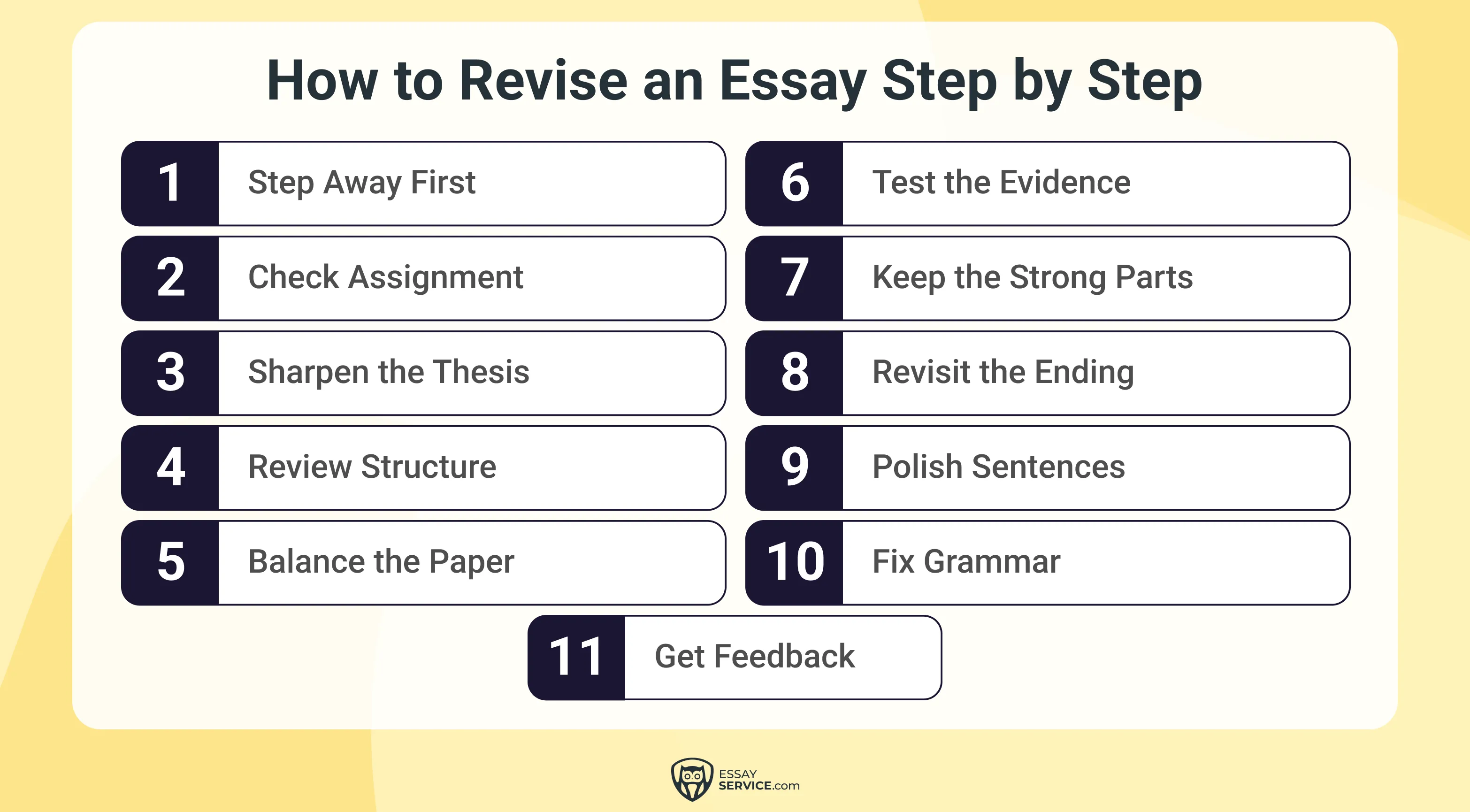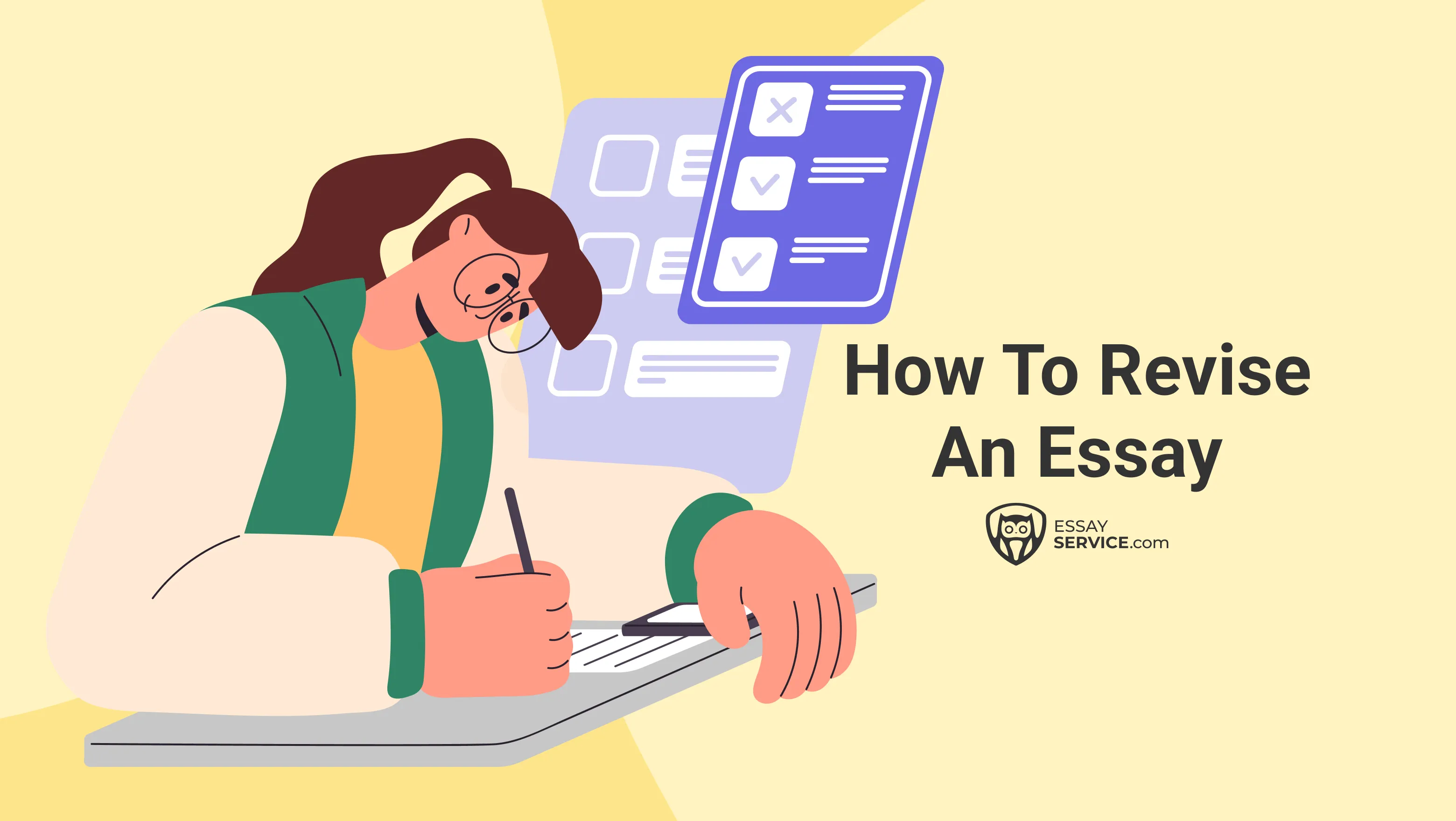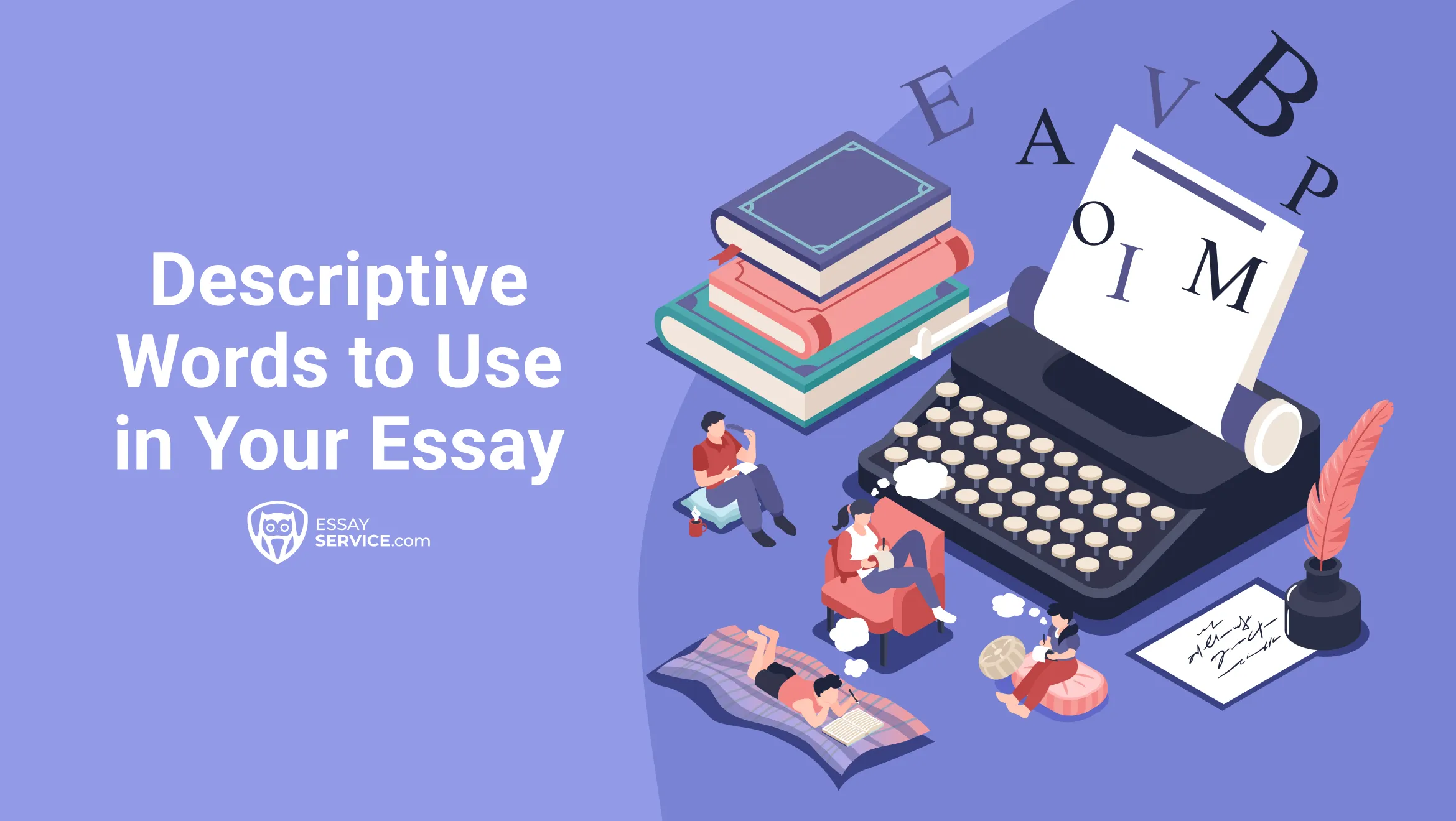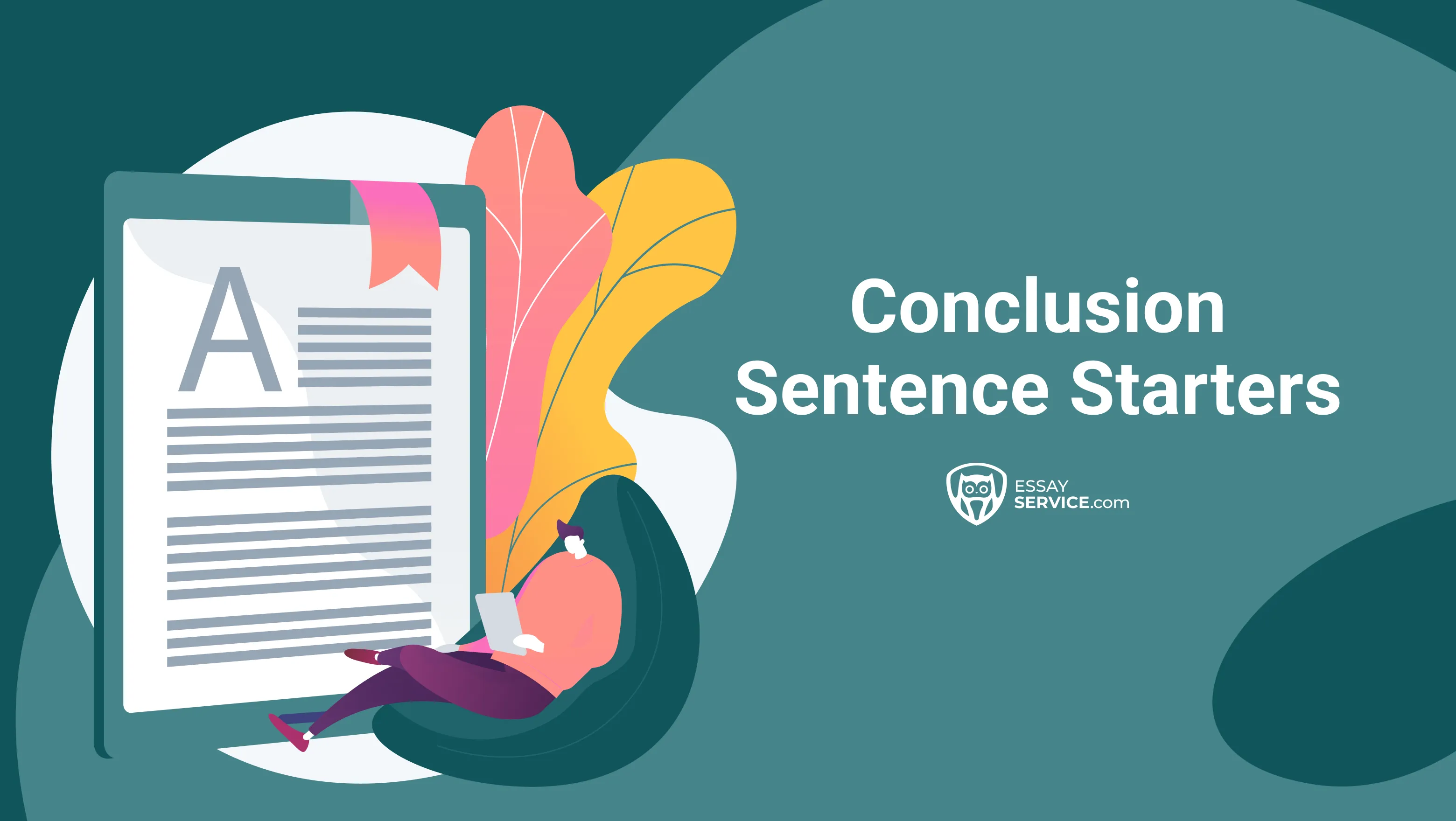The same struggle keeps showing itself in the writing process. We're all familiar with that uneasy feeling when you're technically done writing, but something about the paper still doesn't click. That moment is usually your cue that the essay needs to be revised. Not just to fix the obvious mistakes, but to turn what you've already written into something stronger.
This article will talk about what exactly revising writing means and how it differs from surface fixes. And if the writing or revision process starts to feel like something you can't handle on your own, EssayService is a reliable place for students to turn to.
What Is a Revision of an Essay?
In a literal sense, to revise writing means to look at it again, with a fresh perspective. If you want to revise effectively, you need to ask some big questions: Does your thesis statement hold up? Is the evidence convincing? You take what you've already drafted and make sure that the structure and the arguments feel solid.
You might confuse revision with proofreading. The two can be somewhat similar, but they can't be used interchangeably. Unlike revision, proofreading happens in the later stages. It focuses more on technical precision, while revision helps you strengthen the logic of your essay.
Why is Revising Important
The importance of revision is clear: it tests if the essay expresses your ideas as it should. So the goal here is definitely not just fixing small mistakes. You try to strengthen your argument and make sure the reader follows the writing from start to finish. To recap, the revision process:
- Refines your thesis so the main point stands firm;
- Improves transitions and flow between sections;
- Confirms that your evidence matches your points;
- Builds a stronger bridge between your words and the reader's understanding.
If you're not at the revision stage yet, check out our guide on how to write an academic essay.
How to Revise an Essay in College
It’s a lot easier to revise paper when you approach it step by step. Focus on small fixes and you'll see how effortlessly you'll get through it. Let's go through the revision strategies in detail.

Step Away Before the Revision Process
The urge to dive straight into edits after finishing the draft is always strong. Resist it. Walk away for a little while so your brain can cool down, and only then return to read your paper. That distance is what helps you notice the awkward transitions and dragged-out sentences. The revision process in writing always benefits from a short pause.
Make Sure the Essay Fits the Assignment
Every essay starts with an assignment prompt. Revision is when you check how well you followed it. Read the instructions again and ask if your essay covers the scope properly. Is the focus too narrow, too general, or drifting away? A revised, finished product should follow the requirements but still leave room for analysis.
Strengthen Your Thesis Statement
The thesis statement guides everything that follows. It goes without saying that it deserves some extra attention. It's usually no more than two sentences that sum up the main point of the paper. During the revision, you should ask if the statement is clear enough. Make sure that it's persuasive and that it's reflected in the body paragraphs.
A vague thesis will weaken the entire paper. A revision essay improves when the trivial point is tightened, making every paragraph connect back to it.
Check the Structure and Reasoning
An essay's strength comes from how logically the ideas are arranged. Look at the order of your paragraphs and check flow ideas. A logical structure makes sure the readers smoothly move from one argument to another, while a scattered one makes it harder for readers to follow.
Keep the Whole Paper Balanced
Step back and look at the big picture when you start the paper revision. Does the introduction drag while the body feels rushed? Are some points explained thoroughly, while others get brushed past? Every part of the essay should pull its own weight. Balance gives the reader confidence that you've thought through the subject with care.
Recheck the Evidence Strength
You need to smooth the language during revision writing. But what you must also do is ask yourself whether the evidence you've used still holds up. Look at every quote and number you've included in your essay and determine if they push your thesis forward. Use more vivid examples if you feel you haven't included enough evidence. Weak or unrelated proof will dilute how strong the argument is. A well-placed one, on the other hand, will reinforce your main point.
Only Keep the Good Parts
Not every line deserves to stay in your essay. One of the important points of revision is to keep only the passages that serve a specific purpose. The ones that weigh the essay down need to be cut. So, trim the weak parts so the stronger arguments have more room. A leaner draft almost always reads with better focus.
Revisit the Conclusion
Conclusions rarely get the attention they deserve. But any good writer knows how important the final part is when revising essays. If you're wondering how to close an essay, here's what a proper conclusion should do:
- Show that the thesis still holds up;
- Tie together the main ideas without repeating them;
- Make sure the essay feels complete;
- Leave the reader with a lasting final thought.
Polish the Language on the Sentence Level
You should go through the essay sentence by sentence and make sure each one has a specific purpose. For example, remove the ones that twist around themselves and replace them with direct wording. And remember: precision doesn't mean complicated words. Just the right ones, used in the right places. Revising sentences keeps the reader's focus where it belongs: on your ideas.
Correct Grammar and Word Choice
Small errors add up quickly. A misplaced comma or the wrong word choice can pull the reader out of the essay. Check individual paragraphs and see if there are any grammatical errors or spelling mistakes. Read paper loud so you can spot the mistakes your eyes skip past. When you show the reader that you've carefully revised your paper, you can easily build trust with your audience.
Ask for Another Perspective
By the time you've read your essay a dozen times, your brain starts filling in gaps automatically. Successful revision involves outside feedback, too. Share your draft with someone you trust and ask what makes sense, what drags, and what feels unclear. Fresh eyes can point out problems you never noticed. A different perspective often gives revision the final push it needs.
Tips for Revision: The Final Checklist
Here are the final revision tips for students who want to make sure their essays meet all the academic standards:

Print the essay and mark changes
Try reverse outlining
Match topic sentences with the thesis
Check paragraph flow
Make sure the introduction sets up the topic
Ensure the conclusion ties back to the thesis
Cite and explain all evidence
Ask if each part is clear
Imagine yourself as the reader
Use PREP: Point, Reason, Example, Point
Remove repeated words
Revise individual sentences
Mix sentence lengths
Choose exact words
Fix one issue at a time
Read aloud to hear mistakes
Re-read after each edit
Use a Rewriting Tool to Revise Effectively
A rewriting tool can give you a much-needed push forward when you keep circling the same lines. Instead of stressing and thinking, ‘I wish there were a quicker way to rewrite my essay,’ you can refresh a paragraph in seconds with EssayService’s help. Our tool won't do the writing for you, but it will highlight where your text feels heavy or unclear so you can better understand how to revise and edit an essay. Here's how to use it:
- Copy the text you want to rewrite.
- Paste or upload it into EssayService’s tool.
- Click "Rewrite."
- Track changes and compare versions.
- Keep the parts that improve the paper.
- Repeat until the essay reads the way you want.
Wrapping Up
Revising an essay means changing the first draft until it clearly expresses your ideas. Deleting material is part of it, so is smoothing out the logical flow. Each step of this process makes the final paper more precise and balanced.
EssayService's platform gives students a quick way to go through their papers and adjust their work. With the right approach (and a bit of outside help) revision becomes a lot easier.
Frequently Asked Questions
What Is the Best Way to Revise an Essay?
The best way to revise an essay is to move through it step by step. Start by testing the thesis statement's strength. It must be clear, and every paragraph should connect back to it. Then, review the structure and transitions. Make sure you've used enough evidence throughout. Finally, work sentence by sentence to choose precise words and fix grammar mistakes.
What Are the Three Basic Revision Strategies?
The three basic revision strategies are:
- Content revision – check if ideas are clear and well supported;
- Structural revision – make sure paragraphs flow in a logical order;
- Language revision – polish sentences for clarity and precision.
How Long Should It Take to Revise an Essay?
The time depends on the essay's length and how complex it is. Solid revision usually takes several hours spread across more than one sitting.
Is It Better to Revise in the Morning?
The mind feels clearer and more focused in the morning, so many students prefer to revise their writing in the early hours. However, the best time to revise your essay is whenever your focus is the highest, regardless of whether it’s morning or late afternoon.
Which Question Can Help to Revise an Essay?
The best question to revise your essay is, ‘Does every part of this essay support my main point?’ It helps you see if paragraphs connect back to the thesis and if evidence actually strengthens the argument.

Eugene has spent the past 15+ years editing and proofreading articles for academic journals, newspapers, and magazines. His attention to detail and experience power actionable advice on citations, tone of voice, and more.
- Revision and Proofreading: How to Revise Your Own Writing. (n.d.). Retrieved September 25, 2025, from https://www.bucks.edu/media/bcccmedialibrary/pdf/RevisionandProofreadingJuly08_000.pdf
- Revision. (n.d.). Vanderbilt University. https://www.vanderbilt.edu/writing/resources/handouts/revision/
- Revising And Editing | Writing Advice. (n.d.). https://advice.writing.utoronto.ca/revising/revising-and-editing/
New posts to your inbox
Your submission has been received!


.webp)
